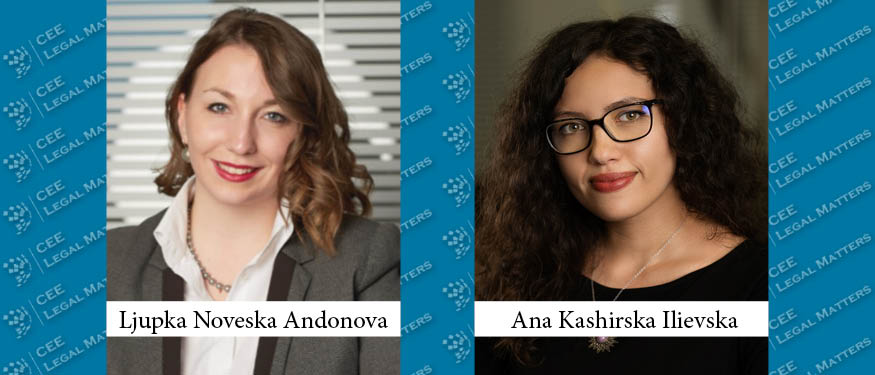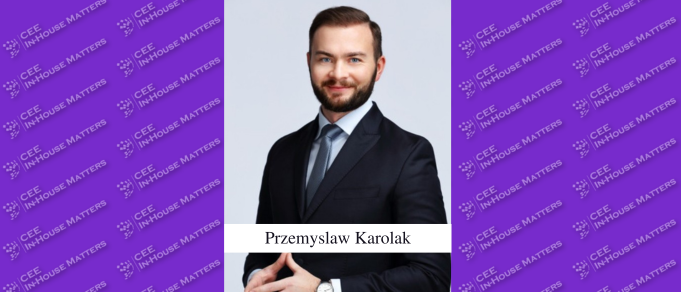On November 21, 2023, corporate/M&A and private equity experts from Bulgaria, Greece, Hungary, Kosovo, Moldova, Romania, Serbia, Slovakia, Turkiye, and Ukraine sat down for a virtual round table moderated by CEE Legal Matters Managing Editor Radu Cotarcea to discuss the key developments in the field over the past decade.
Roundtable Participants:
- Kujtim Kerveshi, Managing Partner, Kerveshi & Partners
- Lukas Michalik, Partner, Ments
- Mykola Stetsenko, Managing Partner, Avellum
- Onur Kucuk, Managing Partner, KP Law
- Panagiotis Drakopoulos, Managing Partner, Drakopoulos
- Pavel Hristov, Partner, Hristov & Partners
- Razvan Stoicescu, Deputy Managing Partner, Musat & Asociatii
- Roman Ivanov, Partner, Vernon David
- Slobodan Doklestic, Managing Partner, Doklestic Repic & Gajin
- Zoltan Forgo, Managing Partner, Forgo, Damjanovic & Partners
Riding the Waves and Riding Out the Storms in CEE
Looking back over the last ten years, change has been the one constant across CEE. With economic downturns, recovery periods, and unforeseen disruptions like the COVID-19 pandemic, the M&A landscape has seen constant shifts.
Resilient Growth Despite Economic Challenges
“There’s been a marked change,” Hristov & Partners Partner Pavel Hristov says. “I’m unsure if we can label it as a sea-level change, but a considerable shift has occurred in dealmaking over the past decade in Bulgaria. Diverse investors have entered the scene, including strategic industry champions, and VC and private equity funds.”
In terms of deal values and volumes, Hristov and Drakopoulos Managing Partner Panagiotis Drakopoulos report a rather positive outlook. “In the past decade, we’ve witnessed fluctuations in M&A activity, from the lows of economic crises to the highs of recovery and subsequent challenges like COVID-19,” Drakopoulos explains. “Despite external factors, Greece’s market remains robust, fueled primarily by foreign investors. Notably, there’s a consistent upward trajectory in both the number and value of deals, with a couple surpassing the EUR 1 billion mark.”
“Bulgaria is not different,” Hristov says, adding that M&A activity has been varying with economic cycles. “During downturns, such as the current one, we observe an uptick of small and midsized transactions, but the overall volume remains largely constant.” Notably, “the present deal values are significantly higher than those a decade ago, and sellers expect much higher valuations. In terms of value, we’ve witnessed a few transactions surpassing EUR 1 billion in valuations, particularly in telecom and banking. For instance, the acquisition of Raiffeisen Bank by KBC Bank in Bulgaria exceeded EUR 1 billion and was part of a consolidation trend in the banking sector,” Hristov says.
Deal Sizes Shrinking, but Transaction Volume Remaining Resilient
For some CEE countries, there has been a rising trend in transaction volumes in the past decade, accompanied by a relative decline in their individual values. “In Hungary, in terms of volume, there has been a slight increase over the past decade, although not consistently gradual – more characterized by ups and downs,” Forgo, Damjanovic & Partners Managing Partner Zoltan Forgo says. “Notable upward trends occurred during 2013-2016, marked by classic deals where mature Hungarian owners were selling businesses to strategic foreign investors. However, the COVID-19 era brought significant challenges, with many transactions either abandoned or completely renegotiated due to the pandemic’s impact. The current transactional environment is not particularly healthy, influenced by factors such as high inflation and high interest rates.”
Similarly, in Slovakia, M&A activity has seen a gradual increase in transaction numbers, as described by Ments Partner Lukas Michalik: “The volume, however, had a notable peak during 2013-2014, marked by a government change. There was a notable phase of asset unloading by the state, representing what we term the ‘next-generation wave of privatizations.’ While the number of transactions has continued to rise, the trend now leans towards deals with lower values.” This shift, according to him, “is particularly interesting, as big-ticket deals are mostly driven by traditional industries, but there are some bigger deals pioneering in newer sectors like the environment and technology.”
KP Law Managing Partner Onur Kucuk draws attention to a similar trend in Turkiye. “The deal sizes are getting smaller and smaller but deal counts are still there,” he says. “We’re no longer witnessing billion-dollar deals. For instance, the most recent notable one was a EUR 300 million energy project. In the past, government sales and investments dominated, but this has changed. Private equity and venture capital are facing challenges in financing, largely attributed to inflation.”
“Similar to Turkiye, in Serbia, we’re observing a challenge for private equity in securing favorable financing,” Doklestic Repic & Gajin Managing Partner Slobodan Doklestic adds. “Over the past decade, we went through a turbulent period marked by an initial economic crisis, leading to numerous deals focused on restructuring and distressed assets. Later, there was an upswing in both the value and volume of M&A deals. The onset of the COVID-19 pandemic impacted various sectors, although our ongoing deals proceeded relatively smoothly. Presently, amidst global developments, we’re facing a challenging period. Fortunately, Serbia is experiencing an influx of foreign investors from diverse regions. While mega-deals (meaning EUR 500 million and above) are rare in Serbia, mid-sized deals in the range of EUR 10-15 million are quite common, particularly in sectors like energy, infrastructure, and banking. The transactional landscape is predominantly shaped by mid-sized deals, with the tech sector, in particular, witnessing ongoing M&A activities.”
Avellum Managing Partner Mykola Stetsenko mentions that there have been many decisive factors over the course of ten years that impacted M&A developments: “In Ukraine, the Revolution of Dignity was followed by six to seven years of impactful reforms. During the pandemic, we experienced lows, but 2021 proved highly successful, a rebound from the pandemic-induced disruptions. However, the size of deals has diminished compared to the early 2010s, though there’s been a notable increase in the number of deals, particularly in IT sectors across the region.” Despite historical deals surpassing EUR 1 billion, he says, “there’s still a struggle with private equity in Ukraine, as they are available, but not in abundance. The ongoing war has significantly impacted businesses, resulting in fewer deals and a substantial drop in volume. Nevertheless, companies, especially Ukrainian clients facing capital control measures, persist in efforts to expand their market share, necessitating reinvestment.”
As for Romania, Musat & Asociatii Deputy Managing Partner Razvan Stoicescu highlights an overall optimistic trend. “The market has exhibited growth, reaching EUR 6 billion in M&A in 2022, a significant increase from EUR 3-4 billion in 2017, despite facing structural challenges,” he reports. “With around ten major deals annually, the overall M&A landscape has performed surprisingly well given the circumstances. The positive trend, marked by year-to-year increases, was particularly notable in 2021, although 2020 experienced a slower pace. While the decrease in deal values poses challenges, there’s an enduring appetite among investors. This resilience might position Romania favorably in 2024.”
Fluctuations in Smaller Economies
In Kosovo and Moldova, as outlined by Kerveshi & Partners Managing Partner Kujtim Kerveshi and Vernon David Partner Roman Ivanov respectively, there are somewhat similar challenges due to their market size and absence of EU membership. “Moldova, being smaller and not a member of the EU, experiences a distinct M&A landscape,” Ivanov notes. “The EU investors are coming to Moldova and that accounts for a large number of our transactions. The majority of transactions are concentrated in the basic sectors.” Additionally, he says, “following the famous fraud cases in 2018, Moldova’s banking sector became refreshed. This renewal attracted numerous international investors to Moldova. This renewal attracted numerous international investors to Moldova. Institutions like Banca Transilvania, Eximbank Bank of Intessa SanPaolo, OTP Bank, and the EBRD played pivotal roles in this transformation. Overall, we don’t have transactions exceeding EUR 100 million.”
“Kosovo, to a certain extent, presents a distinct scenario owing to its size and fluctuations in political stability and security, similar to Moldova,” Kerveshi adds. “The transaction landscape primarily involves small and medium-sized deals. In the previous year, our involvement included a situation with an American seller opting to withdraw from a robust business due to the prevailing instability.” Kerveshi says that while some sectors such as energy and TMT continue to attract investor attention, “still, the transaction value figures show a decline, and it is a trend more noticeable than in smaller countries.”
What’s Peaking Interest?
More Baskets – Diversified Markets
In terms of the most attractive targets in each jurisdiction, Drakopoulos and Doklestic point to the overall trend of diversification in Greece and Serbia, respectively. “In Greece, the strongest sectors have traditionally been hospitality and real estate, with a significant presence of energy projects,” Drakopoulos stresses. “Additionally, sectors like manufacturing, especially light manufacturing, and consulting services are active. There’s a noticeable emergence of new technology targets and heightened fintech activity. Overall, there’s activity across various sectors, introducing new dynamics to the Greek market.”
“Serbia exhibits a unique profile,” Doklestic continues. “The economy is notably diversified, featuring a wide range of activities across various industries. Agriculture stands out as a traditional sector, while banking has seen some activity, often involving our legal services on different sides of the same deals. Automotive, FMCG, infrastructure, and real estate are also highly active in Serbia, especially in Belgrade where prices are on the rise. Our focus isn’t limited to one or two sectors but encompasses a broader range. This diversity has been beneficial, helping us remain active despite market fluctuations.”
Anything “Tech”
While certain sectors and industries have traditionally held strength in each jurisdiction, there are also emerging ones, with one standing out in particular. “Over the last decade, privatization of industries, including infrastructure, energy, and the banking sector, was big, however, that trend has shifted,” Michalik says. “Nowadays, wherever traditional industry meets technology, is very popular. For instance, in Slovakia, there’s a significant emphasis on automotive production, incorporating streamlined processes. Smaller deal activities are associated with this shift, reflecting an overarching trend toward technology, FinTech, MedTech, and anything with a ‘tech’ component, which is currently a substantial focus.”
“In Romania, technology is the prima donna, representing a third of the deals in 2022,” Stoicescu also says. “This can be attributed to how investors view the IT sector, benefitting from a highly qualified and financially accessible workforce. Many investors opt to outsource to the US, given the relatively cost-effective local market, presenting the advantage of buying low and selling high in other countries. However, upcoming tax changes may dilute this advantage.”
“In Bulgaria, TMT has evolved more towards the technology sector, with a notable emphasis on tech over traditional telecom,” Hristov adds. “Standout subsectors like fintech are noteworthy, exemplified by Advent International’s acquisition of myPOS with a EUR 500 million valuation, marking a significant milestone and illustrating the growth potential of new subsectors.”
“For Turkiye, there’s a parallel with the other CEE countries, where anything tech-related finds a ready market, and the possibility of witnessing USD 1 billion deals is not out of the question,” Kucuk adds, with Ivanov highlighting that in Moldova, “tech is another compelling sector, particularly in the realm of IT companies benefitting from a preferential tax regime. Moldova has become a hub for European companies establishing back offices, often with regional operations.”
Turning Up the Heat on Energy
“Following technology, there’s a focus on energy in Romania, driven by the need for diversified energy sources amid the war in Ukraine,” Stoicescu continues. “Renewables, particularly in Bulgaria, are captivating due to a diversified range of energy sources from solar to hydropower to wind generation, attracting substantial investment,” Hristov adds. According to Ivanov, renewables are also gaining traction in Moldova: “With the government implementing urgent measures, large tender projects are anticipated, generating considerable involvement and opportunities. The sector is expected to flourish in the upcoming years.” Forgo specifies that in renewables, there’s a notable emphasis on solar portfolios in Hungary, “driven by ESG considerations, while geothermal energy investments are also present.”
Kucuk and Kerveshi note that in Turkiye and Kosovo, political turmoil might impact energy-related investments. “Currently, in Turkiye, things are moving at a slower pace,” Kucuk says. “While energy remains an attractive sector, the ongoing transition period may influence the direction of trends in the coming years.” Kerveshi on the other hand, adds that, in 2022-2023, “subsequent to political crises, with four or five different governments in the last four years and diminished interest from non-traditional investors, the focus shifted mainly to renewable energy and technology integration from classic industries.”
A Solid Foundation, for Some, in Real Estate
Forgo, Stoicescu, and Kerveshi highlight that traditional sectors such as construction and real estate remain one of the most resilient. “Hungary’s real estate sector appeals to investors due to relatively low property prices compared to Western European countries and some CEE countries, such as the Czech Republic or Slovakia,” Forgo points out. “Austrian investors, especially, have developed and sold office buildings to institutional investors, including real estate funds.” Stoicescu adds that “construction and real estate are also prominent in Romania, though the sustainability of this trend remains uncertain.”
“Construction has been on a constant rise in Kosovo, particularly with investors from Switzerland and Germany, although the ultimate use of these buildings remains uncertain,” Kerveshi adds. “Israeli investors were notably interested before the Gaza-Israel conflict, especially in the energy sector, but there has been a recent step back from them.”
Banking On/In Smaller Markets
Ivanov and Kerveshi report that over the last ten years, there has been robust M&A activity, particularly in the banking and finance sectors in Moldova and Kosovo. “Since 2018, the banking sector has experienced significant growth in Moldova, marked by several banks changing shareholders,” Ivanov says, with Kerveshi adding that “returning to 2017, there was a significant boom, with numerous clients, including major banking, leasing, and insurance groups, exploring investments and acquisitions in the banking sector.”
Other Growth Trajectories
Other major industries with significant growth, according to Forgo and Stetsenko, have been food supplements and sports nutrition sectors, and defense, in Hungary and Ukraine, respectively. “The food supplements and sports nutrition sector saw a significant deal involving the Scitec Group, demonstrating that companies in growth sectors with distribution footprint in Western Europe as well might be able to achieve extra valuations,” Forgo notes, adding that “the private health sector also remains particularly interesting.”
“Traditionally, heavy machinery, agriculture, and metals have been significant sectors in Ukraine, and we continue to see activity in these areas,” Stetsenko points out. “However, renewables and technology have emerged as major industries, along with an increase in deals in the defense sector, which is quite interesting. Additionally, traditional sectors like banking and general FMCG continue to play a prominent role.”
Who’s Buying?
While all participants point out that the major buyers are a mix of strategic investors and private equity funds, there is a noticeable pattern in CEE of strategic investors leading the charge. “The M&A market in Slovakia is like a private club, requiring a local presence to identify targets and buyers,” Michalik notes, adding that “strategic investors, with their better resources and more risk averse approach, often secure larger deals. Notably, there’s a trend favoring continuity of management and founders, in which cases venture capital holds advantages over strategic investors.”
“In Serbia, over the past decade, private equity held a slightly more dominant position than strategic investors,” Doklestic reports. “However, in more recent times, there has been a shift, with strategic investors now having a slightly stronger presence.”
In Bulgaria and Greece, the most active buyers in the market vary depending on sectors. “In Bulgaria, certain industries lean towards private equity, while others attract strategic investors,” Hristov notes. “Regulated industries like telecoms and energy, for instance, predominantly interest strategic investors, whereas technology is increasingly attractive to VC and PE funds.” According to Drakopoulos, “in Greece, strategic investors may dominate the larger transactions, while a significant number of private equity funds engage in smaller deals. However, it’s worth noting that there have been some substantial private equity deals as well.”
Stetsenko and Kucuk draw attention to somewhat distinct patterns from the rest of the CEE in Ukraine and Turkiye. “I believe Ukraine had a well-balanced mix of drivers in its market dynamics,” Stetsenko says, highlighting that “while foreign investors were present, local investors were more active, and there was notable participation from private equity, contributing to a balanced landscape.”
“In Turkiye, the pattern is unsurprising: we lack sufficient financial investors, with a predominant presence of strategic investors,” Kucuk notes. “Notably, we’re witnessing a record number of initial public offerings, with hundreds of companies awaiting approval. Only during the last two months of 2023, around 50 of them are expected to go public. This trend helps balance the absence of strategic investors.”
Black Swans and Other Surprises from the Last Decade
As for the major game-changers of the last decade, Kerveshi and Doklestic point to the COVID-19 pandemic. “The most significant factors were the challenges of the COVID-19 pandemic and subsequent government legal reforms in Kosovo,” Kerveshi notes. “The most substantial influence on the market have been the repercussions of the COVID-19 pandemic, and we continue to face its consequences,” Doklestic also points out.
Stetsenko, Ivanov, and Kucuk draw attention to political developments as a major paradigm shift. “The reforms implemented by the previous government post-revolution in 2014 were the primary driving force over the last six to seven years,” Stetsenko notes. “Moldova’s aspiration to become an EU member is influencing government efforts, and the M&A landscape is being impacted, placing Moldova on the investment map,” Ivanov adds. Kucuk, on the other hand, points to the 2016 coup attempt in Turkiye as a pivotal event: “This had a profound impact on legislation, government, and the M&A landscape. It instilled hesitation among investors, the government, and the public when considering investments, which started to fade away in the last few years.”
As for Hungary, “a notable shift has occurred in the Hungarian Government’s stance towards the EU, and there have been many unorthodox economic measures and pieces of legislation,” Forgo says. “Previously attracting mainly international strategic investors, there’s now a trend toward Hungarian state involvement or investors close to the government on the buy-side of the transactions. This shift in policies and the somewhat unpredictable legislation has made Hungary seem more exotic to Western investors, with foreign strategic investors often found on the sell side.”
Finally, Michalik says in Slovakia, “a continuous and ongoing factor is the maturing of the market, aligning with international standards and EU regulations. Companies are increasingly focused on compliance, becoming more standardized and attractive targets for foreign buyers, reflecting a substantial upgrade.”
This article was originally published in Issue 10.11 of the CEE Legal Matters Magazine. If you would like to receive a hard copy of the magazine, you can subscribe here.













